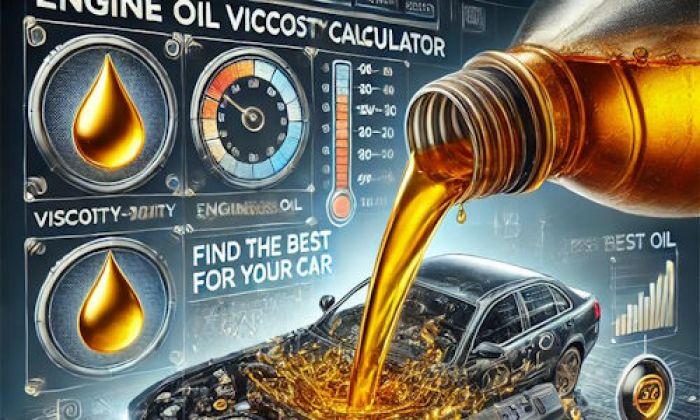The Suzuki GSXR 750 is undoubtedly among the best sports bikes in history. Unmatched handling, great riding experience, and impressive reliability have endeared this beautiful beast to many owners.
With a 173mph top speed and average fuel consumption of 51mpg, this liquid-cooled, 4-stroke DOHC engine weighing 190kg is worth every cent of its $10,000+ price tag. So, what could possibly go wrong? Here we will look at all the expected challenges we face with the Suzuki GSXR 750 and how you can resolve them.
.jpg)
Problem 1: Suzuki GSXR 750 Does Not Charge
One of the major challenges owners of the Suzuki GSXR 750 face is the failure of their machine to charge the batteries. This is majorly caused by a failure in the regulator and rectifiers.
The GSXR 750 stator is responsible for generating electrical current from your bike's motor power. The Rectifier/ Regulator is responsible for rectifying the current and regulating the charge. This role ensures that your battery uses its charge while you ride your sports bike and prevents the battery from overcharging.
Due to a design flaw, particularly with 1st generation GSXR 750s by Suzuki, the positioning of the rectifier in the bike is awful. Because of its close proximity to the engine, it is easy for the rectifier to wear out or burn from engine heat. This is especially true for well-used Gixxers.
Solution: Replace and relocate the regulator rectifier
The R&R's poor location is the reason why it repeatedly gets burnt, no matter how many times they are replaced. The solution for a damaged rectifier and regulator is to have it changed and relocated, preferably in your bike's airbox.
Problem 2: Insufficient rear wheel power
Here is a challenge that forced Suzuki to recall over 23,000 GSX R-750 2011 - 2014 sports bikes. The manufacturers discovered a transmission problem that left bike owners with insufficient power in the bike's rear wheel, thereby increasing the likelihood of a crash. Should your engine rev at high speed, without upshifting appropriately while the gear stays neutral, you kickstart a chain of events that may put you in harm's way.
First, there is a temptation to recover from the missed shift promptly and, in the process, fail to disengage the clutch. This action will generate tremendous torque into the drive sprocket, straining the drive chain's upper part.
Next, there is a possibility that the rear axle's left side will jolt forward, destroying the left chain drive adjuster. There are difficult situations where the chain will detach completely, cutting off power from the battery to the rear wheel. This will eventually lead to a loss of control and a possible crash.
If you are using any of the 2011-2014 models, then, as Suzuki discovered, you are likely to have a weak drive chain adjuster incapable of withstanding the force generated from the above stated scenario.
Solution: Promptly Check for Faults and Perform Upgrade.
Always check the rear axle for faults when you hear any abnormal sounds emanating from that axis. Such sounds are indicative of damage to the final drive compartment. You can also replace the adjuster with a much stronger one that cannot be damaged under such strain. Suzuki dealers offer these heat-treated replacements to owners of the affected models.
Problem 3: Throttle instability - rapid deceleration and acceleration
A common challenge faced by owners of the GSX R-750 is unexpected rapid deceleration and acceleration. This situation is often triggered at lower engine RPMs ranging from 4000-6000 at high engine temperatures above 205 degrees.
The bike seems to have throttle issues at this range and as such triggers off and on abruptly. It may also unexpectedly accelerate without any prior warning or trigger. This defect is particularly prevalent in the 2007 Suzuki sports bikes of this model. It is very dangerous behavior and can be calamitous, particularly when navigating a bend or performing a U-turn.
Solution
Although there are tons of ways to manage or mask the issue, the manufacturers have been unable to present a permanent solution to this challenge. Primarily because your bike ECU will likely fail to display any dealer or error codes. However, common causes include the installation of a Pedal Commander which if improperly installed will lead to poor communication between the TP and the PC.
An alternate cause is the deletion of the exhaust servo valve. Disabling the SET valve creates a dead spot at around 4000RPM in your fuel map. In that circumstance, the appropriate action is to flash the ECU.
Another solution is to check your TPS and make adjustments. The Suzuki GSX R-750 TPS is extremely sensitive. You can gently loosen it to move it to ensure it stays in the middle of the indicator. This move is especially helpful in curbing rapid deceleration in the 2007 models.
Problem 4: One cylinder is not firing
Another common challenge most owners of the Suzuki GSX R750 face is when one of the engine's four cylinders fails to fire. In this circumstance, your sports bike starts alright, but only three of its cylinders fire. As such, your bike can only throttle for a few hundred meters before giving up.
Solution: Check Spark Plugs, Fuel Injector, Exhaust, and Carb
Naturally, the solution in such a circumstance is to check the spark plug system. This means ensuring that your spark plugs are still in good condition. There should not be any black or sooty mixture on the spark plug tip. Check the spark plug cables for any leakage, and seek out any possible wet spots in the plug slots. If the spark plug system seems okay, then you have to look at other possible causes, viz:
- Spoilt fuel injector
- A bad carb
- A bad coil (although this is more likely to affect two cylinders at once)
First, look out for a float bowl seated on a single carb and verify that the needle in the seat points downwards. If it does, then your fuel injector is still in good condition.
Furthermore, a tear in the CV carburetor diaphragm can create a lean condition whenever you engage your choke. This condition is less pronounced when you drive off due to a reduction in the vacuum.
A simple way to check that the diaphragm is at fault without opening up your bike is to downshift before switching off your throttle when driving. You need to check your diaphragm if you hear a popping sound from your exhaust.
The next possible cause may be bad rings or a valve guide. A great way to check for such failures is to observe your exhaust for oil smoke and swipe the pipe for extremely black and oily debris at the entrance. Any other colored soot is more positive and does not indicate a fault in the valve guide or ring.
Problem 5: Intermittent skipping gears
Although this may not be the most well-known challenge faced by Suzuki GSX R-750 owners, the infrequent jumping of the gearbox is a major concern. However, this problem has two simple resolutions.
Solution
There are two ways to resolve a jumping gearbox problem. The first place to check is your bike's clutch cable. This connection between the transmission gears and the engine may be faulty and not supply oil sufficiently. Check that it is properly positioned. Improper positioning will create all sorts of gearbox issues. The second solution to this issue is to change your bike oil. The Suzuki GSX R-750 requires a change in transmission fluid every 60,000 miles.
Problem 6: Brake calipers fail in winter
Unlike other issues listed here, failing brakes are the least common. Many users have reported having braking challenges with the first generation 750 gixxers particularly the 96-99 models. Winters cause the brake calipers to cease. They strip down clean thereby allowing for the fluid to leak with the possibility of a brake failure if not rapidly addressed.
Solution
Many owners who face this challenge often assume that simply replacing the caliper seals and conventionally bleeding the brake system will resolve this issue. But unless you have determined the root cause of the caliper failure, you are bound to experience a recurrence. As such, we recommend that you check for the following before proceeding to make fixes:
Brake system leak
Checking for a brake system leak involves reviewing your lines to see if fluid may be seeping from any of those places. You may also replace all sealing washers on your gixxer brake lines. Old kevlar lines need replacement.
Check the edges of stainless lines, particularly where they attach to the fittings for cracks. You can also replace your stock hose with SS hoses. Once done replace your caliper strip to curb any possible leaks.
Fault in your master cylinder
Where after making changes to curb a brake system leak you continue to experience a malfunction, the root cause is often the master cylinder. A master cylinder rebuild kit is needed to replace the existing one with one capable of supporting the free-moving pistons resulting from your serviced calipers. Worn masters cannot handle such movement and as such can cause brakes to wear out more easily during winter.
Final words
Here are the Suzuki GSXR problems most owners commonly face. We have also provided detailed solutions, and tricks to prevent repeats where necessary. Ride safely!
About the authors
The CarAraC research team is composed of seasoned auto mechanics and automotive industry professionals, including individuals with advanced degrees and certifications in their field. Our team members boast prestigious credentials, reflecting their extensive knowledge and skills. These qualifications include: IMI: Institute of the Motor Industry, ASE-Certified Master Automobile Technicians; Coventry University, Graduate of MA in Automotive Journalism; Politecnico di Torino, Italy, MS Automotive Engineering; Ss. Cyril and Methodius University in Skopje, Mechanical University in Skopje; TOC Automotive College; DHA Suffa University, Department of Mechanical Engineering






Add comment